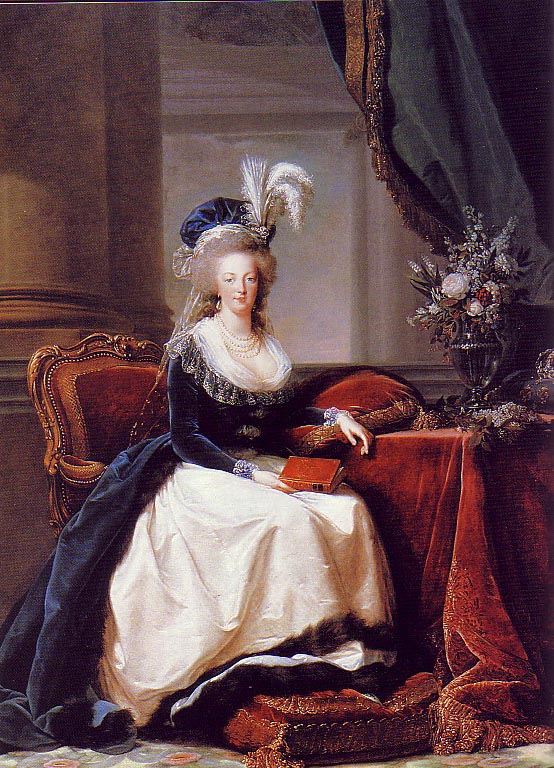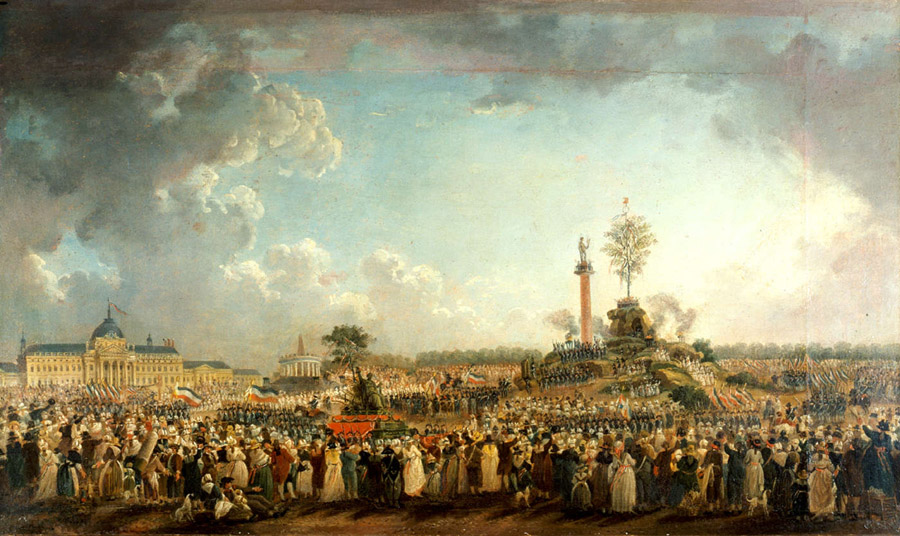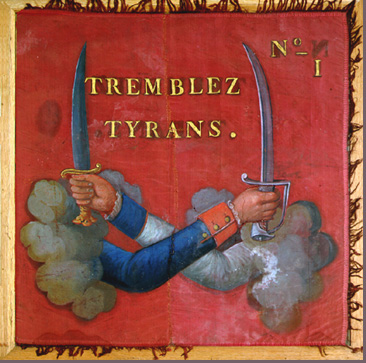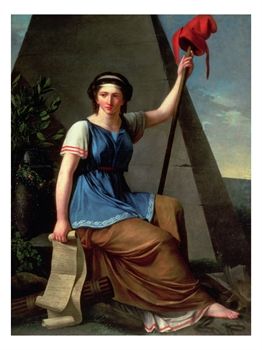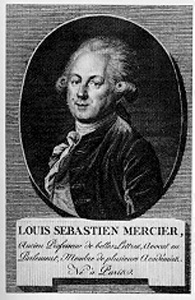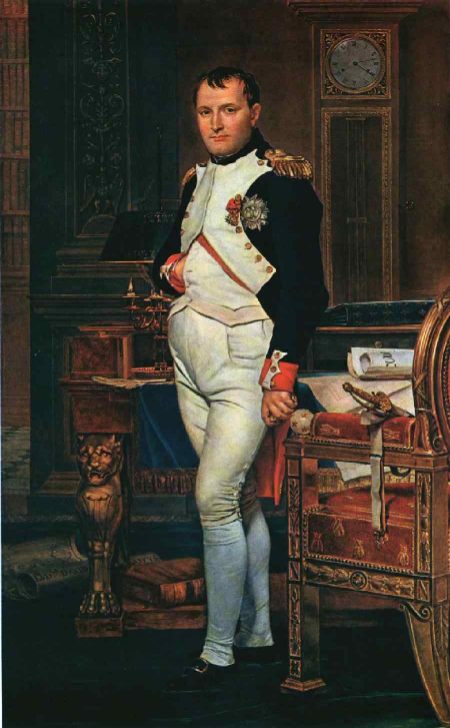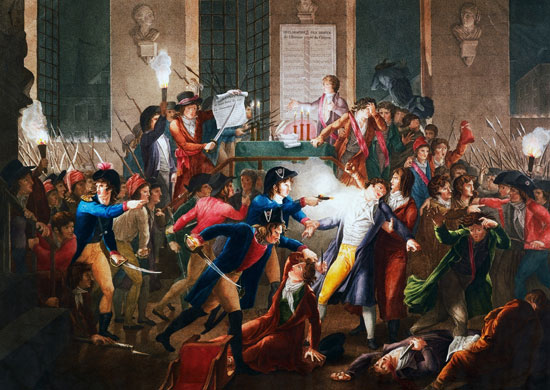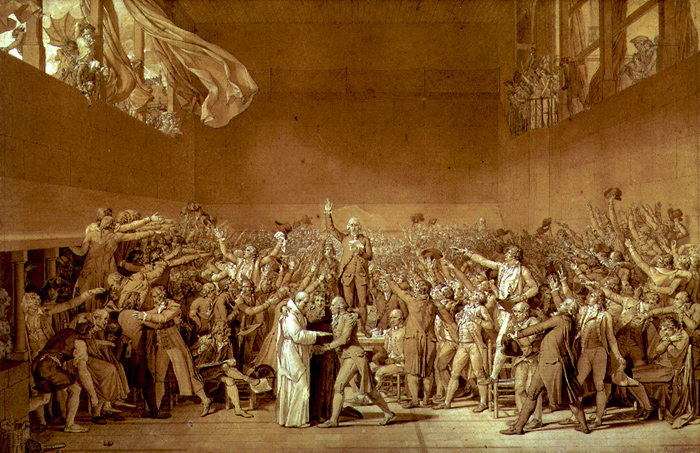
Jacques-Louis David, The Tennis Court Oath (1791), pen washed with bistre with highlights of white on paper. Musée National du Château, Versailles. Image source: CGFA.
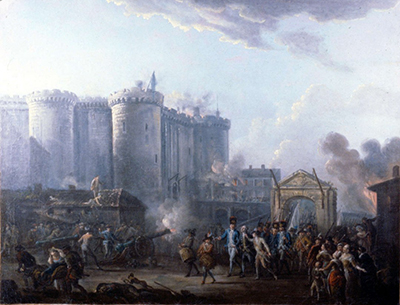 The Old Order Passes
The Old Order Passes
Image: The Storming of the Bastille, 14 July 1789
I. Introduction:
Jacques-Louis David’s Tennis Court Oath
Image: An Annotation of the The
Tennis Court Oath
Image: The Tennis Court as it
appears today
Image: The Storming of the Bastille,
14 July 1789
Image: Louis XVI as
Constitutional Monarch
II. Ending the
Old Regime and Building the New
Image: Convocation of the
Estates General of France, 5 May 1789
Text: The Decrees of 4 August 1789
Text: Declaration of the
Rights of Man and the Citizen, 27 August 1789
III. Sources
of Division
A. Religion and the State
B. Central Power versus Local Control
C. Constitutional Monarchy versus Republicanism
D. Peace versus War
